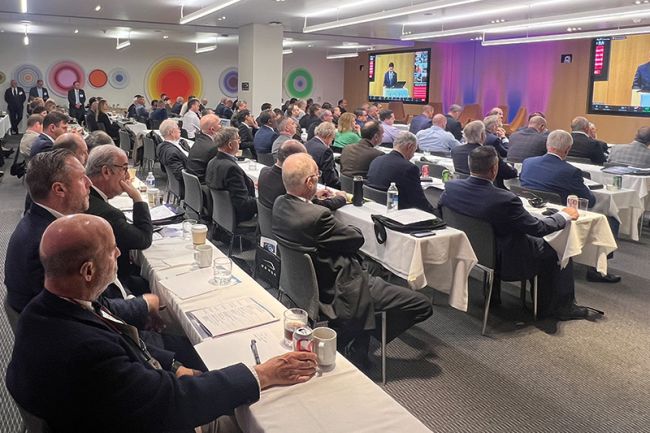Steer Economic Development's response to the Autumn Statement
The Autumn Statement is more of a one nation budget than its predecessor, recognising the necessity to use fiscal policy to support growth.

The Autumn Statement is more of a 'one nation' budget than its predecessor, recognising the necessity to use fiscal policy to both support growth and protect the more vulnerable in our community. Critically, however, the departmental cuts (and their detail) that will impact the most vulnerable are backloaded, with their impact unlikely to be evident until after 2024. In the sections below, we highlight certain issues that will no doubt be reflected upon by Steer Economic Development's client base across the UK.
Labour market will be under strain
The Statement advises that DWP is reviewing the issues holding back workforce participation and will report in the New Year. Post-pandemic, we've seen a rise in economic inactivity caused by illness and stay-at-home parents reacting to the spiralling costs of childcare. On top of this, a lack of skills training generally, the readiness-for-work of school leavers (both skills and mindsets) and upskilling the existing workforce (always a Cinderella issue for smaller firms in even the best of times) are key obstacles to progression.
"Gains to work" are also a barrier to reducing economic inactivity, epitomised by low-wage, zero-hours contracts, and unsocial hours. However, as living standards fall, we're likely to see more people coming back to work (or working past their pension age), especially older workers on State Pensions, to make ends meet.
The Chancellor's Statement infers that 'carrots and sticks' are in play in the new labour market policy. "...600,000 more people on Universal Credit to meet with a work coach so that they can get the support they need to increase their hours or earnings." Active labour market policy can be a hugely positive intervention for those in labour market difficulty. But compulsion may well dilute this policy intent and drive individuals and their households into the informal/illegal economies.
Tucked away in the Statement's detail is the NHS Workforce Plan. The Government will publish a comprehensive NHS Workforce plan, including workforce forecasts, next year. This should be fundamental to the future of the NHS and the UK labour market generally – the NHS is the UK's largest employer, has the potential to be a growth sector, and is vital in ensuring the health and well-being of the national economy at large.
Local public sector bodies throughout the country will be at the coal face of these labour market challenges as the economy tightens and living standards reduce. We expect to assist clients in the coming months with understanding local labour markets and engaging with supply (people and skills) and demand (employers and vacancies).
Energy and infrastructure
The Statement recognises these as cornerstones for growth. Specifically, Sizewell C will proceed with no immediate cuts in government capital budgets for the next two years. For rail, HS2 remains intact alongside East-West Rail, and the Northern Powerhouse Rail plans as set out in the Integrated Rail Plan. This noted it would not have passed-by Northern political leaders that the IRP is already a significant reduction in rail investment for the North, with no HS2 to Leeds, for example.
Levelling Up Round 2 remains in play, with successful bids yet to be revealed and further Devolution Deals are proposed. But, importantly, there appears to be little acknowledgement of how the current energy and cost of living crises are being experienced in different parts of the UK (as highlighted recently in work by The Centre for Cities).
Ensuring that this huge infrastructure spend is in context and addresses the challenges of sustainable development (social, economic and environmental considerations in balance) is a key part of the work and passion of the Steer Economic Development team.
Science and innovation – Britain as Silicon Valley?!
The government has plans to change its approach to Investment Zones to focus on leveraging local research and commercialisation strengths to help build specialised clusters for new growth industries. A key question from the Steer Economic Development team is how such work will differ from very similar agendas led by regional development agencies across the UK since the mid-1990s. Our experience here will be vital to applying lessons from the past.
The new growth priorities (these were growth, growth, and growth under the previous Prime Minister) are now Energy Security, Investment in Infrastructure and a plan to turn the United Kingdom into the world's next Silicon Valley. Whilst COP26 commitments get a mention, there is little depth, and therefore resources, allocated for climate change/resilience. We suggest a huge opportunity is therefore missing. Green growth, innovation, skills and investment for the future feature in almost all our assignments.
So, what does it add up to?
The current economic crisis in the UK is familiar, but this time the causes remain contentious and layered. Despite the easy mantra, energy price hikes are not entirely down to Russia/Ukraine – they flow from a long-standing vacuum in UK energy policy. Brexit's structural adjustments present a further layer, and then there's COVID debt, changes in working patterns that post-COVID will not easily be turned back (and indeed are embedding), rising poverty, and the national accounts laden with liabilities.
Our economists are asking for leadership - how and where will a new consumption model come from (people now save much less and are largely maxed out on credit, so where does the next source of spending come from)? How do we balance population growth and inward migration with our ability to continue to deliver high-quality, modern, and tailored public services to our citizens?
And then there is the vision for the future UK. 'Britain as Silicon Valley' requires a transformational investment in education, workforce training, and innovation, knowledge and enterprise. But the long run in economic development is that transformation is only occasionally achieved, is frequently unexpected (as opposed to planned), and is very often delivered by inspired leaders. As John Maynard Keynes said, 'The difficulty lies not so much in developing new ideas as in escaping from old ones.'
























